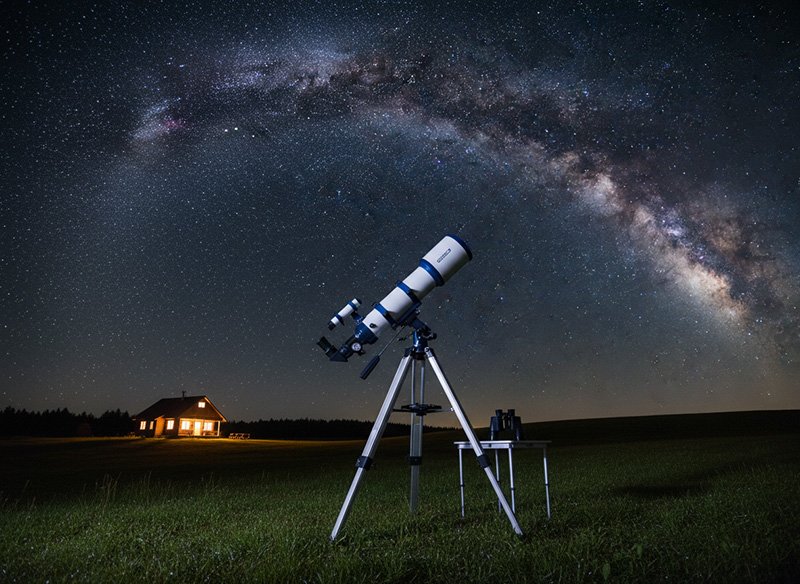Galactic motion is a fascinating and important aspect of understanding the universe. When we look up at the night sky, the stars appear to be still, creating an illusion of stillness and tranquility. However, in reality, galaxies are in constant motion, moving and interacting with each other in complex ways. By studying galactic motion, scientists can gain valuable insights into the mechanics of the universe and how it has evolved over time.
Key Takeaways
- The night sky may appear still, but galaxies are in constant motion.
- Galactic motion is driven by gravity and rotational equilibrium.
- Collisions between galaxies can impact our perception of their motion.
- Human perception is limited in observing galactic motion, especially with distance and expansion.
- Studying galactic motion is crucial for understanding the universe and the role of dark matter.
The illusion of stillness in the night sky
One of the most striking aspects of the night sky is the apparent stillness of the stars. They seem to be fixed in their positions, creating a sense of calm and stability. However, this is merely an illusion. In reality, stars are constantly moving through space, orbiting around the center of their respective galaxies.
The reason why stars appear to be still is because they are so far away from us. The vast distances between stars make their motion imperceptible to the naked eye. It is only when we observe their positions over long periods of time that we can detect their movement.
Understanding the mechanics of galactic motion
Galaxies are massive collections of stars, gas, and dust that are held together by gravity. They come in various shapes and sizes, ranging from spiral galaxies like our Milky Way to elliptical galaxies and irregular galaxies. The motion of galaxies is governed by the same laws of physics that govern the motion of objects on Earth.
The basic mechanics of galactic motion can be understood through Newton’s laws of motion and his law of universal gravitation. According to these laws, objects in space will continue to move in a straight line at a constant speed unless acted upon by an external force. In the case of galaxies, this external force is gravity.
The role of gravity in keeping galaxies together
Gravity plays a crucial role in keeping galaxies together. It is responsible for the attractive force that holds stars, gas, and dust within a galaxy. Without gravity, galaxies would disintegrate and their constituent parts would be scattered throughout space.
The force of gravity between two objects depends on their masses and the distance between them. In the case of galaxies, the combined mass of all the stars, gas, and dust within the galaxy determines the strength of its gravitational pull. This gravitational pull keeps the stars in orbit around the center of the galaxy, preventing them from flying off into space.
The concept of rotational equilibrium in galaxies
One important concept in understanding galactic motion is rotational equilibrium. Rotational equilibrium occurs when the gravitational forces pulling stars towards the center of a galaxy are balanced by the centrifugal forces pushing them away from the center.
In a spiral galaxy like our Milky Way, stars are arranged in a disk-like structure with a central bulge. The rotation of the galaxy causes stars in the disk to experience a centrifugal force that pushes them away from the center. At the same time, the gravitational force from the central bulge pulls them towards the center. When these two forces are balanced, the galaxy is said to be in rotational equilibrium.
The impact of galactic collisions on motion perception

Galactic collisions can have a significant impact on our perception of galactic motion. When two galaxies collide, their gravitational forces interact and cause disturbances in their motion. These disturbances can result in changes in their shape, size, and overall structure.
During a galactic collision, stars and other objects within the galaxies can be flung out into space or pulled towards each other. This can create chaotic patterns of motion that are difficult to observe and understand. As a result, our perception of galactic motion can be distorted during these events.
The limitations of human perception in observing galactic motion
Our human perception has its limitations when it comes to observing galactic motion. As mentioned earlier, the vast distances between galaxies make their motion imperceptible to the naked eye. We can only detect their movement by observing their positions over long periods of time.
Furthermore, our perception is limited to the visible spectrum of light. Galaxies emit light across a wide range of wavelengths, including radio waves, infrared, and X-rays. By studying these different wavelengths, scientists can gain a more complete understanding of galactic motion. However, our human eyes can only see a small portion of this spectrum, limiting our ability to observe and comprehend the full extent of galactic motion.
The role of distance in perceiving galactic motion
Distance plays a crucial role in our perception of galactic motion. The vast distances between galaxies make it difficult to observe their motion directly. Instead, scientists rely on indirect methods such as measuring the redshift of light emitted by galaxies.
Redshift occurs when an object is moving away from us, causing the wavelength of its light to stretch and shift towards the red end of the spectrum. By measuring the redshift of light from distant galaxies, scientists can determine their velocity and infer their motion.
However, distance measurements in astronomy are notoriously difficult and often rely on assumptions and models. This introduces uncertainties into our understanding of galactic motion and makes it challenging to accurately determine the true velocities and trajectories of galaxies.
The impact of galactic expansion on motion perception
The expansion of the universe has a profound impact on our perception of galactic motion. According to the Big Bang theory, the universe began as a singularity and has been expanding ever since. As a result, galaxies are not only moving through space but also being carried along by the expansion of space itself.
This means that even if two galaxies are not moving relative to each other, they can still be moving apart due to the expansion of space between them. This can create the illusion that galaxies are moving away from us in all directions, giving rise to the concept of the expanding universe.
The influence of dark matter on galactic motion
Dark matter is a mysterious substance that does not emit, absorb, or reflect light, making it invisible to our telescopes. However, its presence can be inferred through its gravitational effects on visible matter. Dark matter is thought to make up about 85% of the total matter in the universe, with visible matter accounting for only 15%.
The presence of dark matter has a significant impact on galactic motion. It provides the additional gravitational pull needed to explain the observed motions of stars and gas within galaxies. Without dark matter, galaxies would not have enough mass to hold themselves together and their stars would fly off into space.
The study of galactic motion is therefore crucial for understanding the distribution and properties of dark matter in the universe. By observing the motions of stars and gas within galaxies, scientists can infer the presence and distribution of dark matter and gain insights into its nature.
The importance of studying galactic motion for understanding the universe
Studying galactic motion is essential for gaining a better understanding of the universe. By observing and analyzing the motions of galaxies, scientists can learn about the formation and evolution of galaxies over billions of years. They can also study the effects of galactic collisions and interactions on the structure and dynamics of galaxies.
Furthermore, studying galactic motion can provide insights into the fundamental laws of physics that govern the universe. By testing and refining our models of galactic motion, scientists can gain a deeper understanding of gravity, dark matter, and other fundamental forces and particles.
In addition, studying galactic motion can help us answer fundamental questions about the nature and origin of the universe. By understanding how galaxies move and interact with each other, we can gain insights into the processes that shaped the universe from its early beginnings to its current state.
In conclusion, galactic motion is a complex and fascinating aspect of understanding the universe. While the stars may appear still in the night sky, galaxies are in constant motion, moving and interacting with each other in intricate ways. By studying galactic motion, scientists can gain valuable insights into the mechanics of the universe, the role of gravity and dark matter, and the formation and evolution of galaxies. It is through this study that we can continue to unravel the mysteries of the universe and deepen our understanding of our place within it.
If you’re fascinated by the mysteries of the universe and want to delve deeper into the topic of galaxies, you won’t want to miss out on an intriguing article from The Universe Episodes. In their thought-provoking piece titled “Unraveling the Enigma: Why do galaxies look stationary if they are rotating and moving through space?”, they explore the perplexing question that has puzzled astronomers for years. This article offers a unique perspective on the subject, shedding light on the fascinating dynamics of galaxies and providing insights into their seemingly motionless appearance. To read this captivating article, visit The Universe Episodes’ website at https://theuniverseepisodes.com/about-us/. For any inquiries or further information, feel free to reach out to The Universe Episodes through their contact page at https://theuniverseepisodes.com/contact-us/ or directly via email at https://theuniverseepisodes.com/contact/.
























